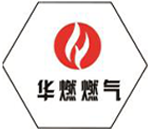
Nov . 12, 2024 17:53
Back to list
صمام تنفيس الأمان
Safety Relief Valves Ensuring Operational Integrity in Industrial Systems
Safety relief valves are crucial components in various industrial applications, providing a vital safety mechanism designed to protect equipment and personnel. These valves maintain the integrity of pressure vessels, boilers, and pipelines by preventing overpressure situations that could lead to catastrophic failures and accidents. Understanding how these valves work and their importance in safety management is essential for industries that handle pressurized systems.
The Function of Safety Relief Valves
At its core, a safety relief valve (SRV) is designed to automatically release pressure from a system when it exceeds a predetermined limit. This automatic response is crucial in preventing damage caused by excessive pressure, which can result from equipment failure, temperature fluctuations, or other operational anomalies. When the internal pressure of a system reaches a specific threshold, the safety relief valve opens, allowing the excess pressure to escape until it drops back to a safe level. Once the pressure stabilizes, the valve closes, ensuring that the system can return to normal operation.
Key Types of Safety Relief Valves
There are several types of safety relief valves used in industrial applications, each engineered for specific conditions and materials. The most common types include
1. Spring-loaded Safety Relief Valves These are the most widely used type. They rely on a spring mechanism to seal the valve until the system pressure exceeds the set point, at which point the valve lifts off the seat to release pressure.
.
3. Delayed-action Safety Relief Valves These valves delay the opening to prevent nuisance tripping in fluctuating pressure systems. Once the preset pressure is achieved, the valve opens to relieve the excess pressure.
صمام تنفيس الأمان

Choosing the correct type of safety relief valve is critical for the application, considering factors such as system pressure, temperature, and the type of media involved.
Importance of Regular Maintenance
Like any mechanical device, safety relief valves require regular maintenance and testing to ensure their reliability and performance. It is essential to adhere to industry standards and manufacturer guidelines for maintenance schedules and inspections. Common aspects of maintenance include
- Visual Inspections Regular checks for signs of wear, corrosion, or physical damage. - Functional Testing Ensuring that the valve opens and closes as intended under specified pressure conditions. - Calibration Verifying that the set pressure remains accurate over time and making necessary adjustments.
Failing to maintain safety relief valves can lead to disastrous consequences, including uncontrolled pressure build-up, equipment failure, and, in extreme cases, explosions.
Regulatory Compliance
Many industries are subject to stringent regulations that mandate the installation and maintenance of safety relief valves. Organizations like the American Society of Mechanical Engineers (ASME) and the Occupational Safety and Health Administration (OSHA) set guidelines that govern the use and maintenance of these safety devices. Compliance with these regulations not only protects the workforce and equipment but also significantly enhances the facility's overall safety culture.
Conclusion
In conclusion, safety relief valves are essential components in the realm of industrial safety, serving as the last line of defense against overpressure conditions. Understanding their function, types, and the importance of regular maintenance can significantly mitigate risks associated with pressurized systems. As industries continue to evolve and technologies advance, maintaining a strong focus on safety through the proper implementation and management of safety relief valves will remain a fundamental priority in ensuring operational integrity and protecting lives.
Next:
Latest news
-
Safety Valve Spring-Loaded Design Overpressure ProtectionNewsJul.25,2025
-
Precision Voltage Regulator AC5 Accuracy Grade PerformanceNewsJul.25,2025
-
Natural Gas Pressure Regulating Skid Industrial Pipeline ApplicationsNewsJul.25,2025
-
Natural Gas Filter Stainless Steel Mesh Element DesignNewsJul.25,2025
-
Gas Pressure Regulator Valve Direct-Acting Spring-Loaded DesignNewsJul.25,2025
-
Decompression Equipment Multi-Stage Heat Exchange System DesignNewsJul.25,2025

